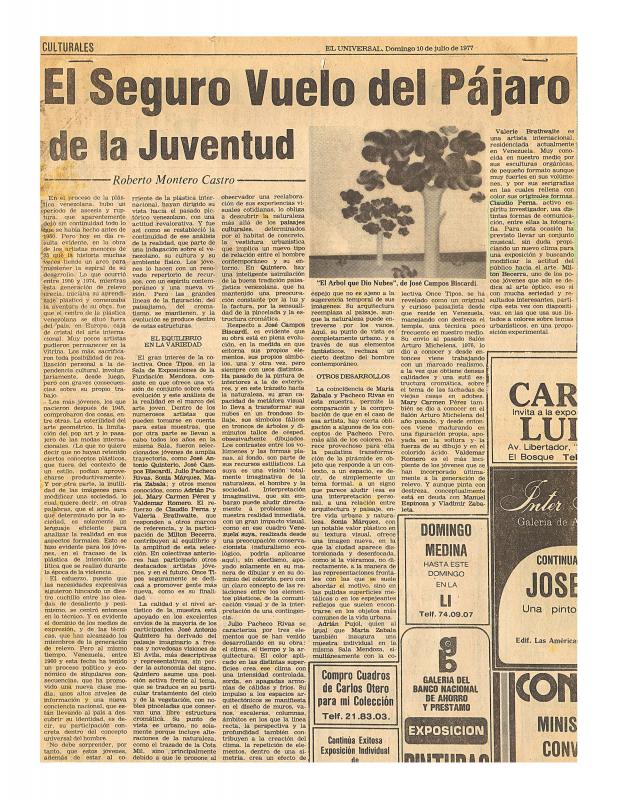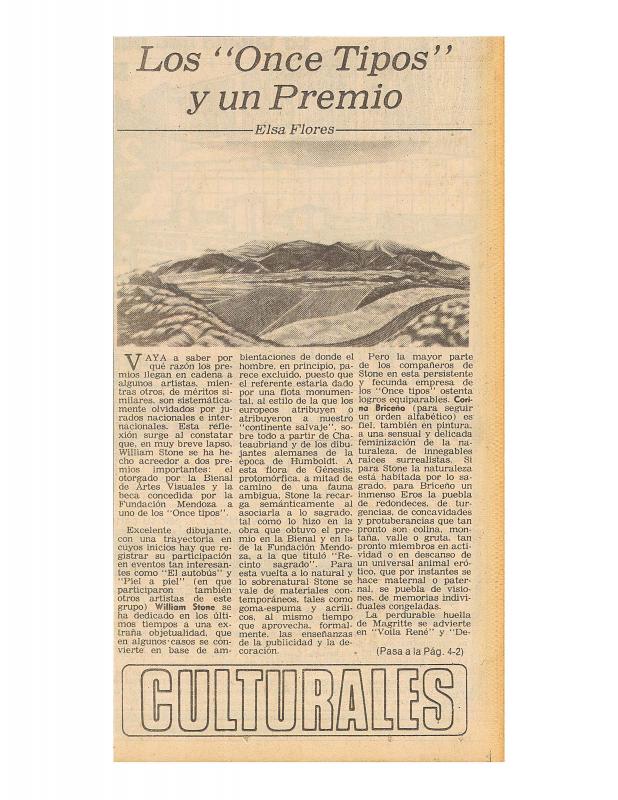The book 11 tipos. Arte en Venezuela en los años setenta by Juan Carlos Palenzuela (1954–2007) is a key reference work for understanding the origins, development, and scope of conceptual art in Venezuela and the versatile use of non-artistic materials. Palenzuela’s article is chock full of bibliographical references from a variety of sources, such as programs, valuations of the works, catalogues, hemerographic references, interviews, post cards, technical specifications for the pieces, and conceptual and visual analyses of all the works and participants in each of the various Once Tipos exhibitions. He also lists the collections where some of the works in these exhibitions are permanently housed. The wealth of information in this article helps present-day researchers to explore this period in the history of Venezuela’s artistic avant-garde and study additional, complementary aspects of the country’s conceptual art.
The researcher belongs to the same generation of artists whose works were included in the Once Tipos exhibitions at the Sala Mendoza. Palenzuela refers to the same sort of codes that his artist friends use, especially in terms of conceptual art discourse. Reading between the lines, it is clear that this book pays tribute to another researcher and curator, Lourdes Blanco who, ever since that landmark decade, has done so much to consolidate and promote conceptual art in Venezuela. This book was published in 2002, but it nonetheless shines considerable light on the last twenty years of Venezuelan art.
See also Roberto Montero Castro’s review of the exhibition Once Tipos de 1977 (Sala Mendoza, Caracas), titled “El seguro vuelo del pájaro de la juventud” [doc. no. 1067487], and the article by Elsa Flores, who reviews the various works presented by the participating artists, “Los ‘Once Tipos’ y un premio” [doc. no. 1059513].


